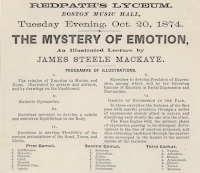Fred and Judy Vermorel's Fandemonium! The Book of Fan Cults and Dance Crazes, first published in 1989 and now out-of-print, continued the themes of their earlier work, Starlust (1985), by celebrating the excesses of pop culture fandom. While Starlust featured the sexual fantasies of fans for pop celebrities in the 1980s, Fandemonium! provided an historical context for that work, tracing the development of various kinds of public hysteria, celebrity cults, and dance manias in 20th-century Europe and the U.S. It was lavishly illustrated with images and press clippings, and designed with the cut'n'paste sensibility of a manic scrapbooker (as if the Vermorals could not keep up with the deluge of mass-mediated material coming at them).
The goal of the book was to highlight the "passions engendered by consumerism." Making loose connections to Tarantism and St. Vitus's Dance and modern forms of mania, the Vermorels focused on everything from the fan riots at the 1927 funeral of film star Rudolph Valentino to jitterbugging to Beatlemania to mosh pits. The "True Stories" chapter featured fragmentary descriptions of celebrity fans impersonating their idols, trying to touch stars, turning star-related merchandise into fetish objects, and stalking. Sections on rock'n'roll assessed the rise of "THE GIRL," a role of "no particular gender," defined by being excitable, vulnerable, and a "consumer idealist/ideal consumer." The book's visual content was intentionally provocative, highlighting the human body: people dancing wildly, fainting behind crowd-control barriers, or in various states of delirium and ecstasy at concerts.
When I first encountered this book, I was suspicious of the unabashed sensationalism of the Vermorels' approach. The connection they were trying to make between the "historical" and the "hysterical" seemed to me overly selective, ignoring less-demonstrative fans like book lovers or more-organized fans like baseball kranks. They used a definition of fandom that fully embraced the portrayals of journalists and other elitist critics of popular culture: fandom was about unruly mobs and stalkers rather than human enthusiasm and connection. And in a move typical of cultural studies work in the 1980s, it casually flipped Adorno-esque cultural critique on its head: the Vermorels asserted that fandom was not about control by the media and its star machinery but about resistance to that control. Thus frenzy and chaos were specifically meaningful:
"But don't knock hysteria. It's not just an irrational force which sends people into self-destructive frenzy. It's also a problem-solving behavior which helps us make emotional sense out of cultural shock and social trauma. Through tis florid and erotic displays we symbolically negotiate our unspoken desires and quite literally 'shake off' constraints by affirming the instinct for pleasure.'"Now, however, I recognize that this was one of the first works in fan studies to address the breadth of fandom's history, bringing together and juxtaposing diverse instances of fan-like behavior over time. Perhaps there is legitimate link between medieval epidemics, 19th-century manias, and modern fandom, even if it's only the discourses used to describe those behaviors. The Vermorels make that issue worth exploring in more depth. And while I still have serious reservations about the Vermorels' definition of fandom as simple fanaticism about stars and find their history distortedly selective, I can get behind some of their broader goals of doing fan history, as stated in their brief but brilliant "Afterword":
This book is about showbiz in its widest sense. It bypasses distinctions and truisms dear to particular tastes or specialisms. Like the difference between rock and pop. Or the origins of rock'n'roll somewhere between the blues and post-War teenage affluence...They all come out of a preoccupation with the stars' or industry's point of view. A history of kings and queens, coronations and abdications, which would seem ridiculously outmoded and woefully elitist in any other subject.
Paradoxically, when you look at it from the consumer's vantage point, showbiz seems a more integrated phenomenon than is usually presented...Focusing on the pleasures, necessities and ambivalences of consuming popular entertainment, on all consumers of all popular entertainment, also creates a definition for showbiz beyond genre and fashion, even beyond particular media...
So often the critic/fan/prof is driven to imagine (or to wish) that the origins of showbiz fascination lie somehow or somewhere in the objects of this fascination....Whereas all the time it's only the fan who has the imagination and talent and tenacity to reinvent such fascinations every single day. The magic of stars is in the work of fans.Fandom is wider and more significant than we thought, and history has a multiple vantage points. Can we continue to build new scholarship on those principles?











